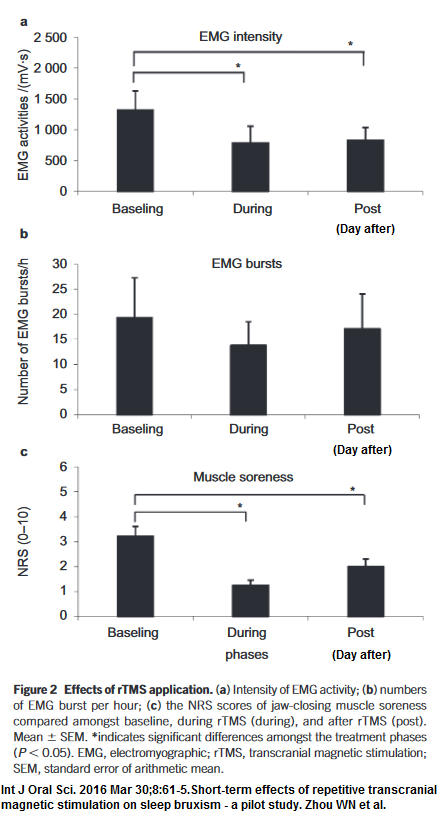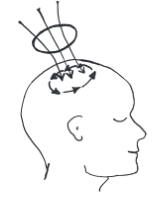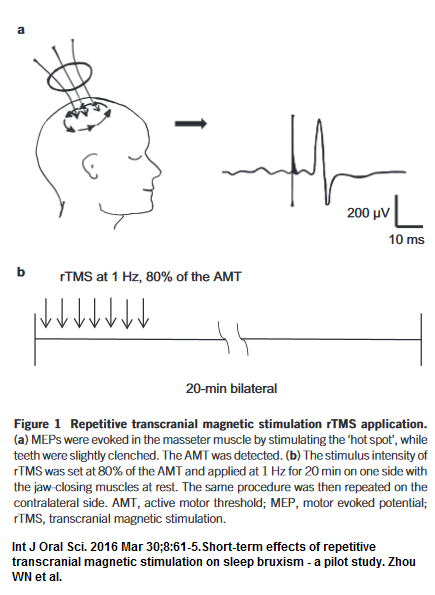Stimulating the primary motor cortex representation of masseter muscle “bilaterally for 20 min per side each day for 5 consecutive days” significantly reduced bruxism and opened up a new avenue of treatment.
Int J Oral Sci. 2016 Mar 30;8:61-5. doi: 10.1038/ijos.2015.35.
Short-term effects of repetitive transcranial magnetic stimulation on sleep
bruxism – a pilot study.
Zhou WN et al
http://www.ncbi.nlm.nih.gov/pubmed/27025267
- “optimal site was approximately 10 cm lateral to the vertex and 4 cm anterior to the interaural line, with slight adjustments for each participant.”
- The site was simulated to get EMG evidence of muscle contraction – the exact spot was hence found and called the “hot spot” – then the intensity was reduced to 80% during active stimulation. It was easier to find the hot spot if subject lightly contracted his/her jaw during testing. The 80% was taken from the minimum intensity required to get a response half the time.
- “The coil was oriented at an angle of 45 degrees relative to the parasagittal plane with the handle pointing posteriorly. This coil orientation induces current flow in a posteroanterior direction in the underlying cortex”
 Comment- I’ve got to get one of those machines – anyone know where to get one cheap? Repeated cycles of above could have long-lasting effects for something that is poorly prevented except with clonazepam and like drug use – and stopping antidepressants.
Comment- I’ve got to get one of those machines – anyone know where to get one cheap? Repeated cycles of above could have long-lasting effects for something that is poorly prevented except with clonazepam and like drug use – and stopping antidepressants.


